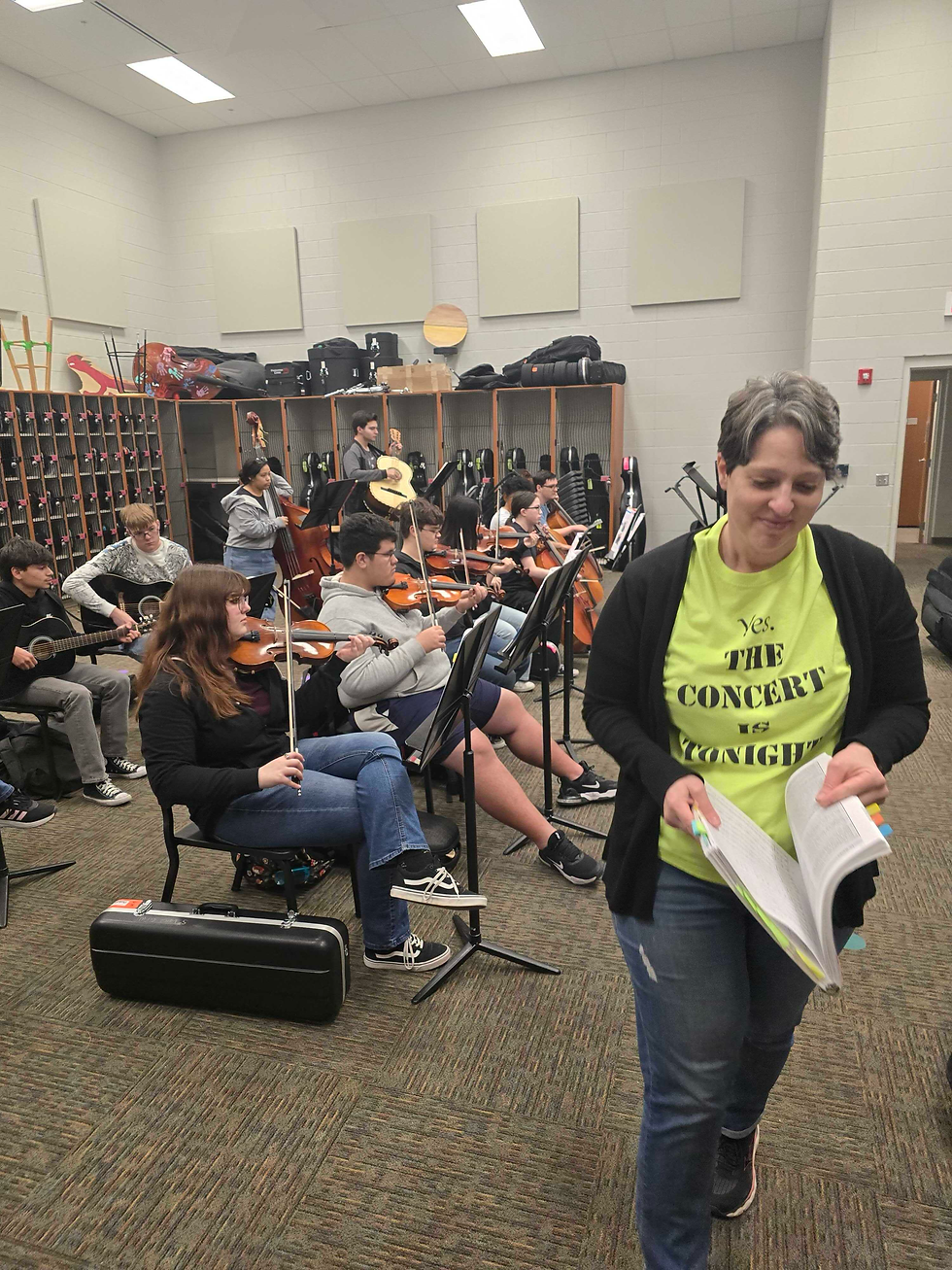Musician Etiquette
- Dynamic Music Studios
- Jul 25
- 4 min read
Updated: Jul 28

First Rehearsal to First Performance: Learning Musician Etiquette
From the moment they stepped into the rehearsal room, the new student had no idea how much more there was to learn beyond just the notes on the page. Their instrument was tuned, their case tucked under their chair, and they had a pencil tucked into their folder. So far, so good. But like many beginning ensemble players, they quickly discovered that being a good musician in a group setting was as much about awareness and etiquette as it was about technical skill.
The First Rehearsal: More Than Just Playing
The student arrived five minutes before rehearsal started, assuming that was enough time. It wasn’t. They rushed to unpack and find their seat just as the director stepped onto the podium. That first scramble taught them something important: showing up early, ideally ten minutes ahead of time, is not just polite. It gives a player time to settle in, warm up, check their music, and be ready to focus.
As rehearsal began, the director gave instructions to the second violins. The student, seated in the cello section, started looking through their own music and quietly practiced a tricky passage. It seemed harmless, but the director paused and looked over. “When I’m speaking to one section, others should still be listening.” The student froze. That moment made something click. Even when the director isn’t speaking to your section, there is a lot to be learned. Rehearsal isn’t just individual practice. It is a shared experience.
They also learned not to rely on others for materials. When their stand partner asked, “Did you bring our music?” the student realized they hadn’t. From then on, they always brought their own music, a pencil, and anything else they might need. Relying on a friend or stand partner was not fair to anyone.

Understanding the Flow of Rehearsal
Soon, the student picked up more unspoken rules of rehearsal.
When the director’s arms are raised, instruments should be up and ready. Not sitting in laps. Waiting until the very last second to raise the instrument results in missed cues, sloppy entrances, and a feeling of being behind. When the conductor gives a downbeat, everyone needs to come in together. No hesitation.
They noticed that the strongest players followed the section leader carefully, even when they already knew their part. In group playing, following the section leader helps keep bowings, phrasing, and timing unified. The section leader, in turn, was always prepared. A leader who doesn’t know their part cannot guide anyone else.
Perhaps the most important lesson came when the student started to play louder than the rest of the section during a group passage. The director stopped and reminded everyone: “This is not a solo. Listen to each other. Match tone. Match timing. Go for a group sound.” It was a humbling but valuable lesson. Ensemble playing is not about standing out. It is about blending in and contributing to the whole.
Dress Rehearsal: Practicing Performance Behavior
By the time dress rehearsal arrived, the student had made progress. They were on time, music in hand, and focused. The ensemble practiced entering the stage quietly, adjusting stands without scraping, and bowing as a group. It felt a bit like theater, but it mattered. Audiences notice the visual aspect as much as the sound.
During the run-through, mistakes happened. Instead of panicking or calling them out, the student watched how the director calmly worked through problem areas. When mistakes are handled with patience and professionalism, the entire ensemble improves faster.

Performance Day: Putting It All Together
On the night of the concert, the student showed up early, dressed neatly according to the guidelines. The backstage area buzzed with quiet energy. Some players fidgeted nervously, but the student remembered to stay calm, double-check their materials, and review the opening measures in their mind.
When the group walked onstage, they moved quietly, adjusted their stand quickly, and sat tall, waiting. As the director raised their arms, the student lifted their instrument right away. They were ready. That readiness wasn’t just about notes. It was about respect for the process and the people around them.
They played well, not because they were perfect, but because they were part of a team. They followed their section leader, watched the conductor, and listened carefully to the other sections. When the final chord rang out, they bowed with the group, feeling proud not just of their own playing, but of what they had accomplished together.
The Takeaway
For new students, it’s easy to focus only on the music. But ensemble playing teaches something deeper: respect, responsibility, and awareness. Learning musician etiquette—being prepared, listening, watching, blending, and leading when it is your role—makes the experience smoother, more enjoyable, and more successful for everyone involved.
While this scenario was based on a string orchestra setting, the overall message applies just as easily to other ensembles and instruments. Whether you play wind, brass, percussion, or sing in a choir, the core principles of respect, preparation, and teamwork remain the same.
Whether you are the section leader or a supporting player, every part matters. The more you learn to play with others instead of beside them, the more powerful your music becomes.

Article written by Christina Gentzsch, co-owner and cello instructor at Dynamic Music Studios in Coralville, IA.




Comments